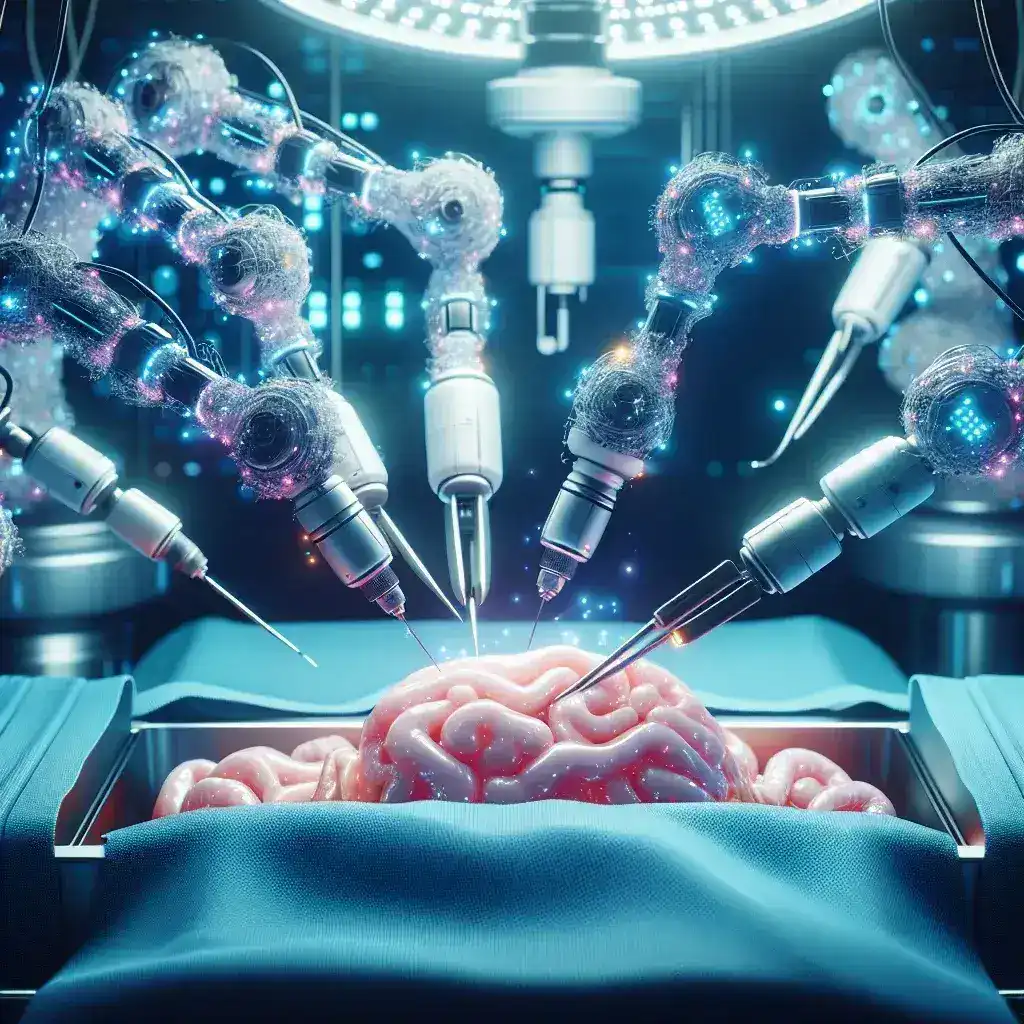Introduction
The field of surgery is undergoing a transformative evolution with the introduction of artificial intelligence (AI) technologies. One of the most significant advancements is the development of AI surgical systems that can adapt in real time to variations in tissue. This innovation holds the promise of improving surgical precision, reducing recovery times, and enhancing overall patient outcomes.
The Rise of AI in Surgery
Historically, surgery has relied heavily on the skill and experience of the surgeon. However, as medical technology has advanced, so too have the tools available to these professionals. From robotic systems to imaging modalities, the integration of technology has continually aimed to improve the efficacy and safety of surgical procedures. The emergence of AI represents the next frontier in this evolution.
What is AI Surgical System?
An AI surgical system is a sophisticated network of algorithms and machine learning models designed to assist surgeons during operations. These systems analyze real-time data from various sources, including imaging technologies and sensors, to provide insights and recommendations tailored to the specific circumstances of each procedure.
How AI Adapts to Tissue Variations
One of the most remarkable features of AI surgical systems is their ability to adapt in real time to variations in tissue. This adaptability is crucial, as human tissue can vary widely due to factors such as age, health status, and the nature of the condition being treated.
- Real-Time Data Analysis: AI systems continuously analyze data from imaging modalities, such as MRI or CT scans, to identify the precise characteristics of the tissue at hand.
- Dynamic Decision-Making: These systems use machine learning algorithms to dynamically adjust surgical approaches based on the real-time feedback received during the operation.
- Enhanced Precision: With the ability to adapt to tissue variations, AI systems can guide instruments with remarkable precision, minimizing damage to surrounding healthy tissue.
Historical Context and Technological Evolution
The journey of integrating AI into surgery has been progressive. Early attempts at computer-assisted surgery date back to the 1980s, where rudimentary robotic systems assisted surgeons with limited capabilities. Over the decades, advancements in computing power, imaging technologies, and machine learning have led to the sophisticated AI systems we see today.
Key Milestones in AI Surgical Development
- 1990s: Introduction of robotic-assisted surgery, enabling greater precision in surgical procedures.
- 2010s: The rise of machine learning algorithms trained on vast datasets, improving predictive analytics in surgical settings.
- 2020s: Development of AI systems capable of real-time adaptation, revolutionizing how surgeons interact with technology during operations.
Benefits of AI Surgical Systems
The advantages of AI surgical systems that adapt in real time to tissue variations are profound.
1. Improved Surgical Outcomes
By providing surgeons with real-time insights and adaptive guidance, AI systems can enhance the safety and efficacy of surgical procedures. This leads to fewer complications and improved recovery times.
2. Reduced Surgical Time
AI’s ability to analyze data quickly allows for more efficient surgeries, as surgeons can spend less time deliberating on the best course of action. This efficiency not only enhances the surgical experience but also reduces the risk of infection and other complications associated with prolonged procedures.
3. Personalized Surgical Approaches
Every patient is unique, and AI systems can tailor surgical techniques to individual anatomical variations, ensuring a more personalized approach to treatment.
Challenges and Considerations
While the potential of AI surgical systems is vast, several challenges must be addressed.
1. Data Privacy and Security
With the collection of vast amounts of patient data, protecting privacy and ensuring data security is paramount. Healthcare providers must navigate complex regulatory landscapes to safeguard sensitive information.
2. Training and Integration
Surgeons and medical staff must be adequately trained to work alongside AI systems. This involves understanding the technology’s capabilities and limitations to ensure optimal collaboration.
3. Ethical Considerations
The use of AI in surgery raises ethical questions regarding accountability and decision-making. It is essential to establish clear guidelines on the role of AI in surgical practices.
The Future of AI in Surgery
As technology continues to advance, the future of AI in surgery looks promising. Predictions suggest that AI systems will become increasingly sophisticated, with the ability to learn from each surgical procedure and improve over time.
1. Enhanced Predictive Analytics
Future AI systems will likely incorporate even more advanced predictive analytics, allowing for proactive decision-making and improved risk management.
2. Broader Adoption Across Surgical Disciplines
As the technology matures, we can expect broader adoption of AI surgical systems across various surgical specialties, from orthopedics to neurosurgery.
3. Collaboration Between Humans and Machines
The synergy between human surgeons and AI will define the future of surgical practices, creating a collaborative environment that enhances patient care.
Conclusion
The advent of AI surgical systems that adapt in real time to tissue variations marks a significant milestone in the field of medicine. As these systems continue to evolve, they hold the potential to redefine surgical practices, ultimately leading to better patient outcomes and revolutionizing how surgery is performed. The integration of AI into surgery is not just a technological advancement; it is a transformative shift that promises to enhance precision, efficiency, and personalization in surgical care.

